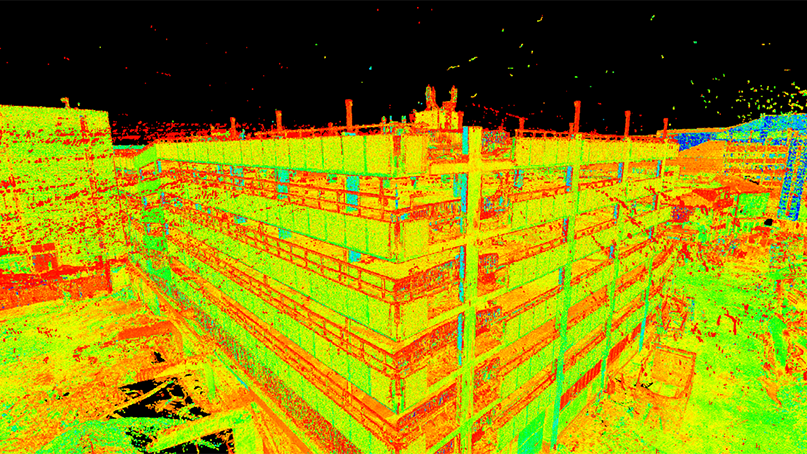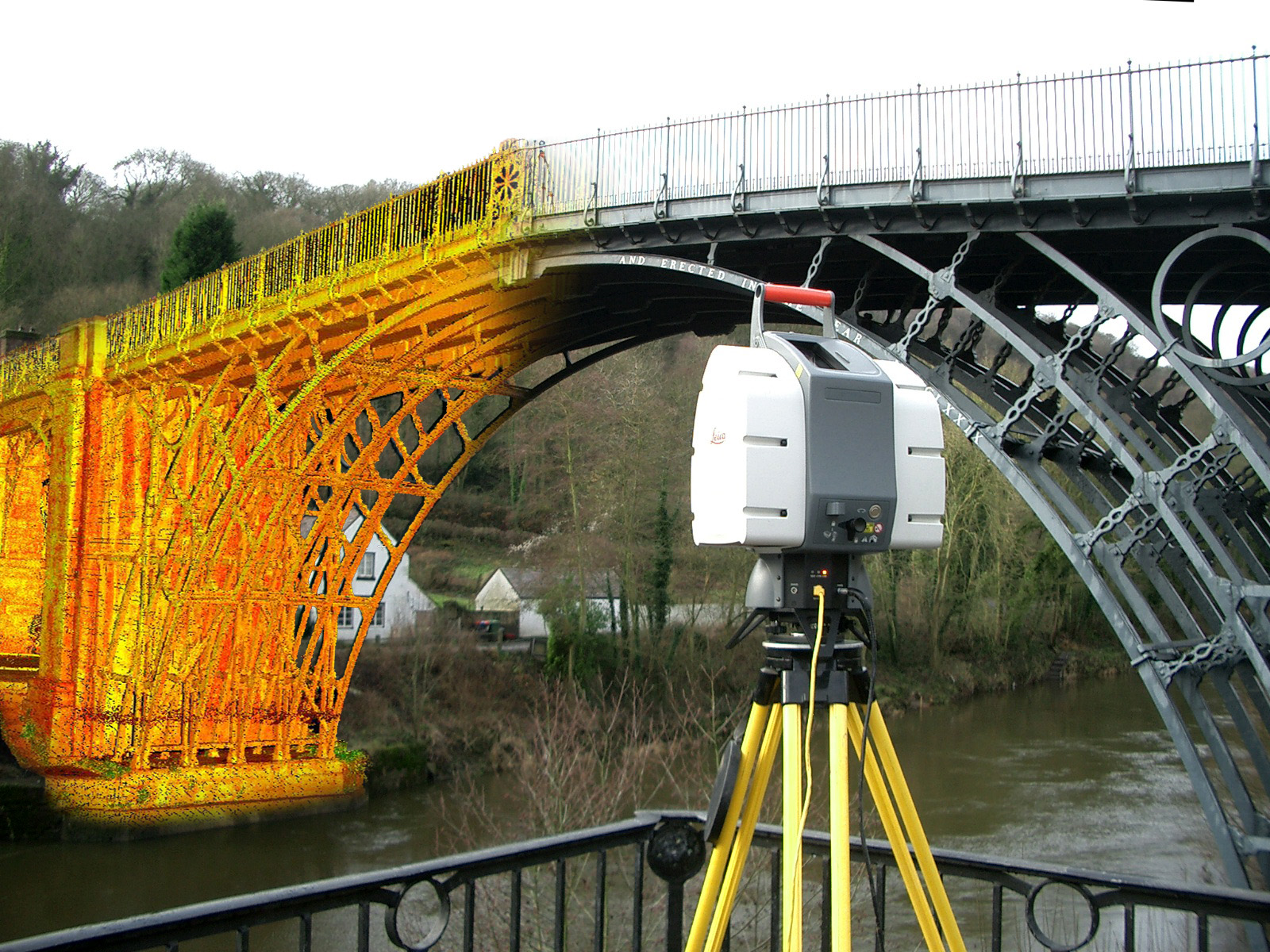How 3D Scanning Enables Bold Architectural Concepts
Enhancing Manufacturing Processes: The Impact of 3D Laser Scanning on Quality Assurance
3D laser scanning technology is transforming quality control in manufacturing. By offering precise measurements and high-resolution data, it enables manufacturers to determine deviations from specifications easily. This improvement not just enhances assessment processes but also boosts functional effectiveness. 3D Scanning. The execution of this innovation comes with its own set of obstacles. Checking out these aspects exposes the wider implications for industries and the future landscape of production

Comprehending 3D Laser Scanning Modern Technology
3D laser scanning technology has progressed significantly in current years, its fundamental principle stays simple: catching the specific geometry of objects using laser beams. This innovation utilizes laser light to determine ranges in between the scanner and different factors on an item's surface area. The information gathered is after that refined to produce an in-depth 3D version, properly mirroring the measurements and shapes of the scanned item.
Usually, 3D laser scanners can be classified into two main types: contact and non-contact scanners. Contact scanners physically touch the things to collect dimensions, whereas non-contact scanners make use of laser beam of lights to record information from a range. The adaptability of this innovation enables its application across various sectors, consisting of production, style, and building. Its capacity to create high-resolution designs helps with quality assurance, reverse engineering, and quick prototyping, eventually enhancing layout accuracy and efficiency in manufacturing processes.
Advantages of 3D Laser Scanning in Manufacturing
As manufacturers seek to boost efficiency and precision in their procedures, the benefits of 3D laser scanning have actually ended up being increasingly obvious. This ingenious modern technology permits extremely accurate and fast measurements of complicated geometries, considerably minimizing the time needed for quality checks. By catching detailed information, manufacturers can determine disparities early in the production procedure, therefore reducing waste and revamp costs.
Additionally, 3D laser scanning facilitates much better layout validation, allowing designers to contrast as-built problems with original specs. This capability ensures that any kind of deviations are quickly attended to, boosting overall product high quality. In enhancement, the modern technology supports the creation of digital twins, which can be used for simulations and procedure optimizations. Therefore, manufacturers not only enhance their operational effectiveness however additionally boost their affordable benefit on the market. Generally, the combination of 3D laser scanning stands for a transformative action towards attaining greater criteria in making quality assurance.
Assimilation of 3D Laser Scanning Into Quality Assurance
Incorporating 3D laser scanning right into top quality control procedures boosts the precision and performance of examinations throughout production. This modern technology makes it possible for suppliers to record in-depth, high-resolution information of elements and assemblies, permitting for specific dimensions and contrasts against design specifications. By employing 3D laser scanning, organizations can identify deviations from resistances better, which is crucial for preserving product integrity.

Real-World Applications and Situation Research Studies
Real-world applications of 3D laser scanning in producing demonstrate its transformative impact across various industries. For instance, aerospace companies utilize this innovation to conduct exact assessments of elements, ensuring they meet stringent safety and security criteria. A noteworthy situation entailed a leading aircraft producer that used 3D laser scanning to simplify its quality assurance procedures, substantially decreasing evaluation times and mistakes.
In the vehicle sector, manufacturers have executed laser scanning to create electronic doubles of their cars, enabling real-time modifications during manufacturing. check my reference One vehicle company reported a 30% decrease in rework costs after incorporating this modern technology right into their assembly lines.
In the customer products sector, companies are making use of 3D laser scanning for rapid prototyping, enabling for quicker models and boosted item layouts. These applications illustrate just how 3D laser scanning not just boosts accuracy yet also improves efficiency and technology across numerous production domain names.
Conquering Difficulties in Execution
Executing 3D laser scanning in producing presents numerous challenges that organizations need to browse to fully recognize its advantages. One substantial hurdle is the initial expense of tools and software program, which can deter business from embracing this technology. Furthermore, incorporating 3D laser scanning right into existing workflows requires conquering resistance to alter amongst staff members, demanding comprehensive training programs to ensure efficiency. Information administration additionally postures an obstacle, as the high quantity of information generated by 3D scanning should be efficiently processed and examined to obtain actionable insights. Compatibility issues with legacy systems may impede smooth combination, demanding potential upgrades or modifications. Addressing these challenges is essential for manufacturers intending to boost high quality control and enhance production procedures. By creating clear methods for training, financial investment, and data management, companies can minimize these barriers and launch the transformative potential of 3D laser scanning in their procedures.
Future Fads in 3D Laser Scanning for Manufacturing
As manufacturing remains to progress, the assimilation of 3D laser scanning with enhanced automation is expected to change production procedures. Improved data analytics will certainly play a crucial role in improving and enhancing process high quality control. These patterns highlight the possibility for higher efficiency and precision in manufacturing settings.

Boosted Automation Assimilation
Although the integration of automation in manufacturing has been progressive, the future of 3D laser scanning is poised to accelerate this pattern substantially. As making procedures come to be significantly intricate, the need for precise, real-time measurements grows. 3D laser scanning technology offers automated data capture, reducing labor prices and decreasing human mistake. This assimilation permits makers to enhance quality assurance processes, enabling quick discovery of variances in manufacturing. In addition, the alignment of 3D laser scanning with robotics and automated systems facilitates smooth procedures, improving overall efficiency. As suppliers embrace these sophisticated technologies, they can anticipate enhanced accuracy and performance, placing themselves competitively in a quickly evolving market. The harmony in between automation and 3D laser scanning marks a substantial jump forward in making advancement.
Improved Data Analytics
The assimilation of automation has actually paved the way for advancements in information analytics within the domain of 3D laser scanning. Manufacturers are official source significantly leveraging advanced algorithms and maker knowing techniques to examine large datasets created by laser scans. This improved information analytics ability enables real-time surveillance of manufacturing procedures, enabling the recognition of discrepancies and issues better than conventional approaches. Predictive analytics can anticipate potential problems, greatly decreasing downtime and boosting overall effectiveness. In addition, the ability to picture information in three dimensions gives deeper insights right into manufacturing workflows, fostering much better decision-making. As 3D laser scanning innovation remains to evolve, the role of information analytics will come to be increasingly important in driving development and preserving competitive advantage in production.
Frequently Asked Concerns
What Industries Advantage one of the most From 3D Laser Scanning?
The markets that benefit most from 3D laser scanning include manufacturing, building and construction, aerospace, auto, and medical care. These fields make use of the modern technology for precision measurements, quality control, and efficient layout procedures, significantly enhancing overall functional performance.
Exactly How Does 3D Laser Scanning Compare to Traditional Dimension Approaches?
3D laser scanning uses higher precision and speed contrasted to standard measurement approaches. It catches comprehensive geometries quickly, reducing human error and promoting much better analysis, which inevitably improves overall quality assurance in different sectors.
What Is the Price of Executing 3D Laser Scanning Technology?
The cost of implementing 3D laser scanning innovation varies significantly, generally varying from $10,000 to $100,000, depending upon software application, training, and tools. Organizations should consider these expenses versus potential effectiveness and quality enhancements.
Exist Particular Software Program Demands for 3D Laser Scanning?
Yes, 3D laser scanning requires click this link details software program, including data handling and modeling applications. Common options incorporate CAD software, point cloud handling devices, and specialized applications that facilitate the combination and evaluation of checked data for ideal results.
How much time Does a Common 3D Laser Scanning Process Take?
A normal 3D laser scanning procedure can take anywhere from a few minutes to a number of hours, relying on variables like the size of the things, complexity of the setting, and required level of detail for precision.
3D laser scanning modern technology is changing top quality control in manufacturing. 3D laser scanning technology has developed significantly in current years, its basic concept continues to be uncomplicated: recording the precise geometry of objects using laser beams. Integrating 3D laser scanning into quality control processes enhances the accuracy and efficiency of inspections throughout manufacturing (3D Scanning). 3D laser scanning technology offers automated data capture, reducing labor prices and decreasing human mistake. The price of applying 3D laser scanning modern technology differs significantly, usually ranging from $10,000 to $100,000, depending on software application, training, and devices